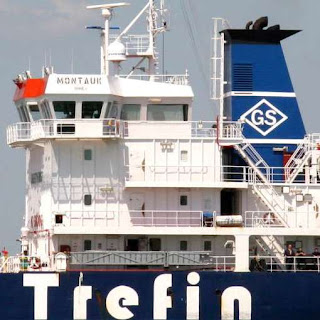What is a confined space?
Confined spaces have a number of key attributes:
• The space must be large enough for a worker to enter but be too small for continuous occupation
• The space should feature limited openings for entry or exit
• The space may be poorly ventilated
• There may be inwardly sloping walls or floor
Many confined spaces exist within a variety of industries including marine applications. Depending on the type of ship and the cargo, dangerous gas concentrations can form in the atmosphere at any time. Liquid gas, fuel, chemicals and other fossil fuels harbor a risk of explosion and there is a danger of suffocation from lack of Oxygen when using Nitrogen or other non-flammable gases for inerting. It is also important to be aware of dangers presented by toxic gases such as Carbon Monoxide from exhaust fumes, or Hydrogen Sulphide from the decomposition of organic compounds found in the briny water inside the ballast tank.
Likely hazards encountered in confined spaces
Typically, confined spaces can contain a variety of hazards including Hydrogen Sulphide (H2S), Carbon Monoxide (CO), Methane (CH4) and Oxygen deficiency.
•
H2S - H2S is a toxic gas that is produced as a bi-product of microbial activity. This gas is highly toxic and at concentrations less than 30ppm is identifiable by its strong odour of rotten eggs. At concentrations higher than 30ppm, H2S paralyses the olfactory nerve, stopping the sense of smell. At concentrations of 500 to 700 ppm, death will occur within 30 mins to 1 hour.
•
CO - CO is a toxic gas that is produced by the incomplete burning of fossil fuels such as oil, gas and coal. During normal combustion, Carbon Dioxide is produced (CO2) but when ventilation is inadequate, CO can be produced instead. CO is absorbed by haemoglobin in the blood and prevents Oxygen being absorbed, causing the victim to die of asphyxiation. At concentrations of 400ppm, CO will start to cause nausea, dizziness, headache and sickness. At concentrations of 800ppm, death will occur half an hour after exposure.
•
CH4 - CH4 is a combustible gas that is produced by the decomposition of organic materials. CH4 is the main constituent of Natural Gas and as a result, leaks in gas pipes can be another source of Methane.
•
Oxygen Deficiency - Normally Oxygen makes up 21% of the atmosphere and an Oxygen deficient environment is described as being one where Oxygen levels are 19.5% or less. Oxygen can be displaced by toxic or inert gases and microbial action, oxidation caused by rusting metal and combustion can also cause an Oxygen deficient environment. At 19.5% Oxygen the operator will feel drowsy. At 17% and less cognitive processes and coordination will be severely compromised. At levels of 6% or lower, death will occur quickly.
Although these are the most likely gases to be encountered in confined spaces, other gases can also be found.
Dealing with marine confined space entry
Before an operator enters a confined space, they will need to make a pre-entry check to determine the hazards in the area.
The use of a multi-gas portable gas detector, capable of providing simultaneous monitoring of H2S, CO, Oxygen and combustibles (%LEL) is essential for safe confined space entry (please note: the sensors used with any portable device must reflect the known hazards likely to be in the environment).
First the operator must perform a full test of the environment prior to entering. Once the area has been cleared for entry, continuous monitoring must continue to ensure the area remains safe from gas hazards.
Pre-entry check:
Testing at various levels of the confined space is essential because of the differing nature of gases and the fact that some are heavier than air, whilst others are lighter, than air.
Naturally, until the hazards are known and evaluated, it is not safe for the operator to directly enter the area. The use of a confined space gas detector kit makes stratified testing easy and generally includes a multi-gas monitor with pump, 10 foot sampling hose for pre-testing (longer lengths available).
Continuous monitoring
After initial testing is complete, the atmosphere within the space must be continuously monitored to ensure the area remains safe. If a hazardous atmosphere is detected during entry, employees should exit immediately, re-evaluate the space and take corrective measures.
What portable device?
The ideal portable device needs to offer simultaneous monitoring of 4-gases, and be rugged and suited to tough environments; especially when working in marine applications where water is likely to be present. This makes an IP66/67 rating preferable. Audible and visual alarms are also necessary to ensure that the operator is alerted to an issue, even in noisy environments.
The
MARINE QUATTRO - portable multi-gas detector is ideal for the job being rugged and reliable with the World's longest continuous operation battery life.
Find out more about the MARINE QUATTRO.

.png)


















.jpg)




